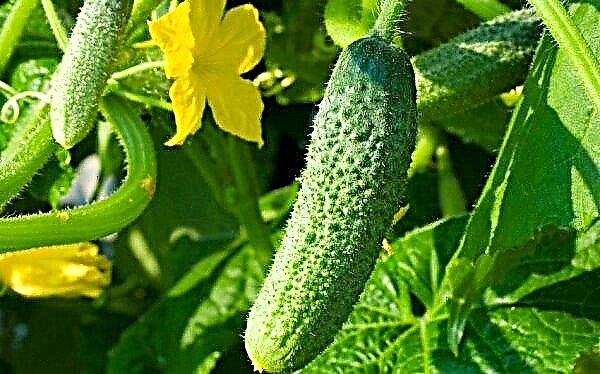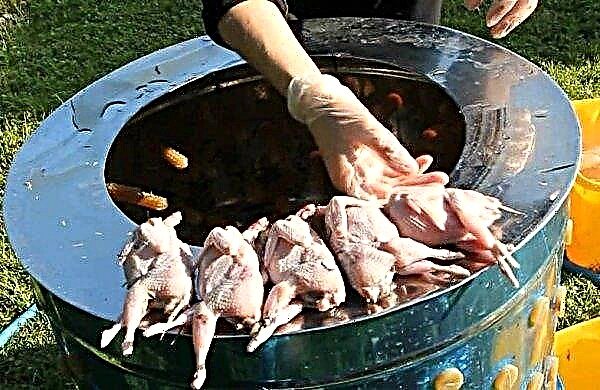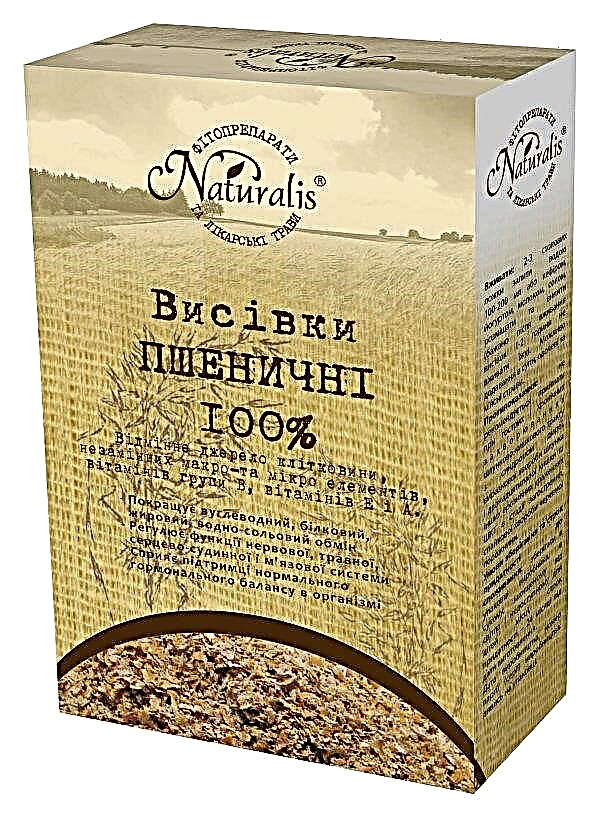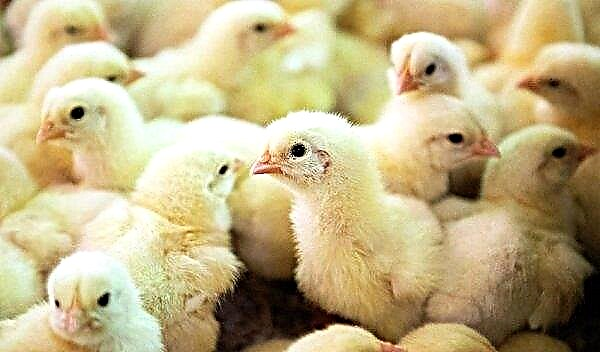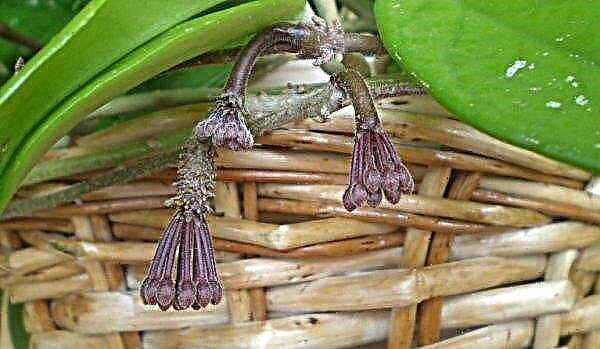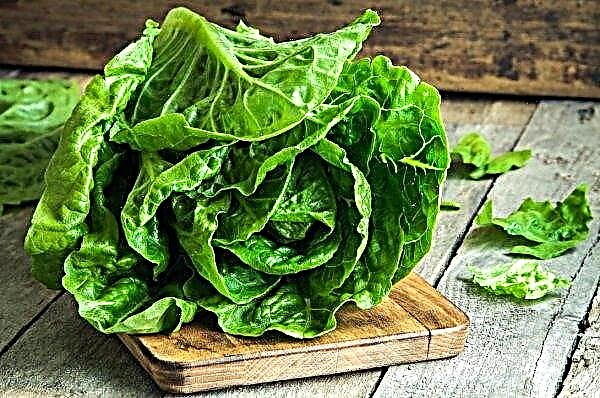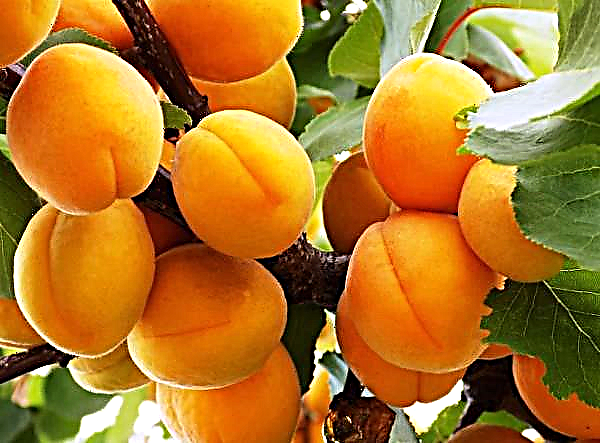Greenhouses designed to protect plants from adverse climatic and weather conditions simultaneously stimulate the development of pathogenic microorganisms and pests, which leads to diseases and a decrease in the yield of cultivated crops. Read more about the occurrence of rot on tomatoes in greenhouses and about how to solve this problem, see the article.
Types of rot on tomatoes
The elevated temperature and humidity inherent in greenhouses create favorable conditions for development not only for plants, but also for their enemies. Various types of rot observed on tomatoes in greenhouses are the result of fungal, viral or bacterial effects on plants. Sometimes rot is non-infectious in nature, but again it is the result of excessive heat and humidity.
Did you know? While, according to the verdict of the United States Supreme Court, tomatoes are required to be considered vegetables in their homeland in America, the EU has ordered its citizens to call them fruits. Meanwhile, botanists believe that tomatoes are actually berries.
White rot
This type of rot, also called sclerotiniosis, is caused by a fungus and spreads throughout the plant, affecting all its parts, including the fruits. It features a characteristic white coating. In a neglected state, the disease can destroy most of the crop. The appearance of the fungus is provoked by poor-quality disinfection or its absence at all, as well as a violation of the temperature and humidity conditions.
Gray rot
From white this type of rot is distinguished by another fungus that provokes the disease. But the conditions for its development are identical and are expressed by high temperatures up to + 40 ° C and humidity reaching up to 100%. Spores of the fungus affect the stems of the plant, causing necrotic processes in them, and then get to the fruits. Gray rot can even strike tomatoes already harvested and stacked for further transportation. In addition to heat and high humidity, the appearance of gray rot provokes other violations of the rules for care (excessive watering, excessive presence of nitrogen in the soil).
Brown rot
This common type of rot, also known as phomosis, most often appears on green fruits, surrounding the stalk. As a result, tomatoes, not having time to ripen, break away from the bush and fall to the ground. The fungus forms brown spots on the surface of the fruit, affecting at the same time the insides of the tomatoes. The fungus stems and leaves does not leave its attention, forming numerous dark spots on them. Violation of crop rotation rules, excessive soil moisture and an excess of nitrogen in it stimulate the development of the fungus.
Vertex rot
This common tomato disease can be caused by fungi, and can be non-infectious in nature, provoked by violations of agricultural regulations. Most often, the appearance of vertebral rot is caused by changes in both temperature and soil moisture, as well as a saturation of the soil with nitrogen and a deficiency of potassium in it. Vertex rot is characterized by concave spots on the surface of the fruit, which are dried or filled with liquid and emit a characteristic putrefactive odor.
Why tomatoes rot in a greenhouse: the main reasons
There are several reasons why putrefactive processes are formed on tomatoes in greenhouse conditions, among which are most actively manifested:
- violation of agrotechnical rules for the cultivation of tomatoes;
- impact on plants of pests.
Did you know? Unlike most other plant fruits, tomatoes do not lose during heat treatment, but, on the contrary, acquire valuable properties.
Pests
Actively propagating in favorable conditions for greenhouses, pests in the absence of preventive measures and the use of means to combat them provoke the appearance of rot on tomatoes in two ways:
- spreading fungal spores, viruses and bacteria from plant to plant, infecting healthy from patients;
- sucking out nutrients from a plant, which weakens it and makes it more susceptible to disease.
The most dangerous attacks for tomatoes:
- Bear representing an underground 5-centimeter insect that damages the root system of the plant. They fight them through the use of the drug "Thunder" or folk remedies in the form of infusion of 1 kg of onion husks in a bucket of warm water for 5 days. This tool treats the soil around the bushes after watering. You can also prepare an infusion of 200 g hot pepper in a bucket of water, which is poured into the burrows of insects.
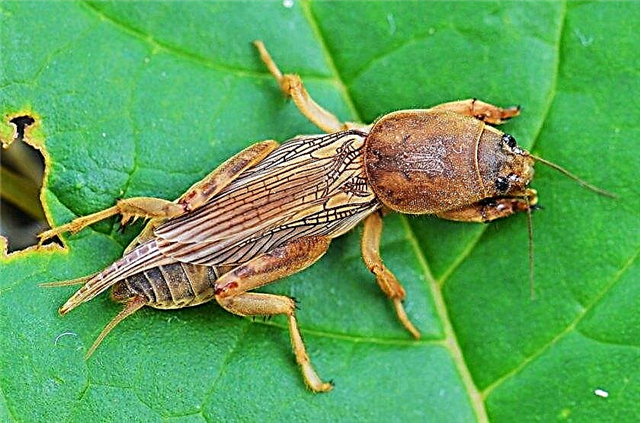
- Wireworms, which in the form of 2-centimeter yellow caterpillars damage the stems and roots. They are destroyed using the Bazudin preparation, planting legumes in a greenhouse and processing holes before planting tomatoes with a pink potassium permanganate solution.
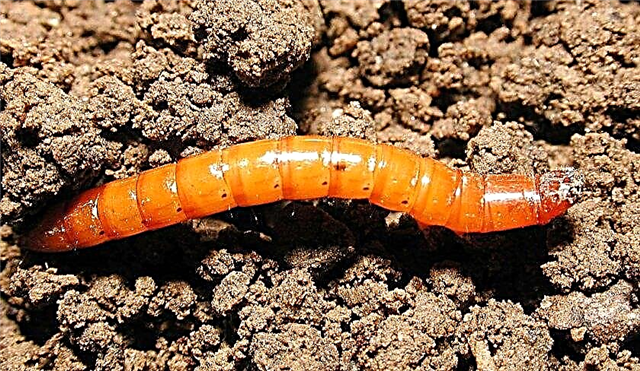
- Melon aphids damaging leaf surfaces and stems and provoking the appearance of saprophytic fungi, as well as carrying pathogenic viruses. To combat it, use the drug "Fosbetsid."
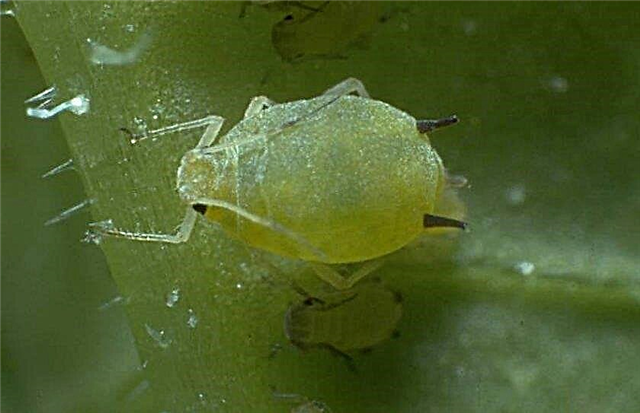
- Colorado potato beetle destroying foliage of goods. They struggle with it by pollination of green mass with birch ash at the rate of 1 kg per 10 m².
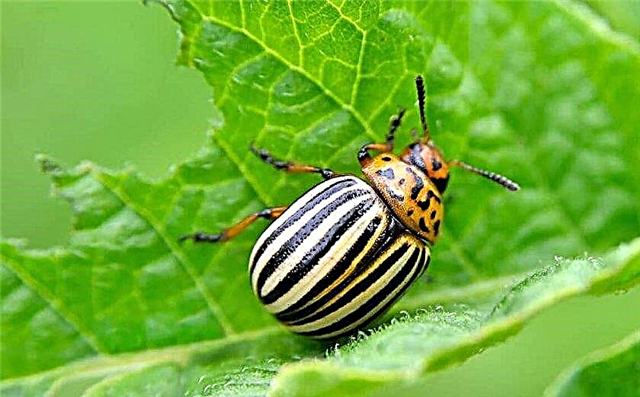
- Spider mite, infecting leaf cells. The tick is destroyed with the help of “Akarin”, “Vertimek” or “Fitoverm” preparations.
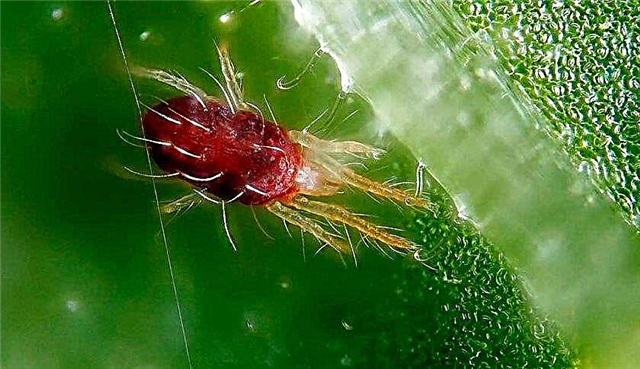
- Thrips sucking nutrients from a vegetable and destroying plant tissue. They fight pests with the help of the drug "Boverin", which is used to process tomato bushes twice a month.

In the fight against pests, the use of "Barrier", "Clean Garden" and "Karbofos" has proven itself well. An insecticide that can be made with your own hands is excellent in fighting insect pests. To do this, 250 g of chopped garlic heads should be placed in a bucket of water. A week later, before spraying tomato bushes, the infusion is diluted with water in a ratio of 1: 3.
Important! During feeding, it is necessary to protect the leaves from fertilizers, which can cause burns and other injuries on them, which can lead to further infection of plants and their disease.
Tomato care violations in the greenhouse
Failure to comply with the agrotechnical rules for growing tomatoes in a greenhouse most often leads to the appearance of putrefactive processes on the leaves, stems and fruits of the plant. These agrotechnical flaws are most pronounced in:
- excess of temperature and humidity conditions in the greenhouse;
- excess watering;
- increased concentration of nitrogen in the soil;
- severe thickening of planted tomato bushes;
- ignoring crop rotation rules;
- neglect of the need to disinfect seeds and soil before planting.

Methods of struggle
If the first symptoms of rot formation on tomatoes are detected, emergency measures must be taken to prevent the spread of infection throughout the greenhouse. If the process of rot formation on a plant has already gone far, then such a plant is immediately destroyed. In the initial stages of the disease, the tomato is treated with universal drugs with a wide spectrum of action in the form of Radomil, Skor, or Zaslon. With their help, tomato bushes are processed three times with an interval of 2 weeks. Ripe fruits are sprayed with a weak solution of potassium permanganate at the rate of 1 g per 5 l of water. In addition, it is useful to pour half a liter of this solution under each tomato bush.
Important! In no case should you cultivate tomatoes in the same beds for more than 3 years in a row.
Preventive measures
Most of the putrefactive processes that develop on tomatoes are very difficult to treat, if at all. Therefore, preventive measures to prevent the occurrence of these problems come to the fore. And the first among them is the strict implementation of the agrotechnical rules for cultivating tomatoes in greenhouses.
To do this:
- seeds used for planting to choose from healthy and fully ripened tomatoes, exposing them to seed disinfection with a 1% manganese solution;
- scrupulously at all stages of plant development to comply with temperature and humidity conditions;
- avoid temperature extremes;
- to carry out regular watering without making big pauses and not teaching the irrigation intensity;
- to avoid the formation of high humidity, ventilate the greenhouse after each watering;
- make mandatory loosening of the soil after each irrigation;
- do not thicken the landing;
- use only disinfected tools during stepsoning;
- water tomatoes only at the root or in specially dug holes near the bushes, preventing water from entering the leaves;
- use biosecurity against gray rot by planting mustard, calendula and marigolds in the greenhouse.
By scrupulously following all agrotechnical rules for growing tomatoes, it is entirely possible to avoid the occurrence of putrefactive processes on plants or, at least, to minimize them.








